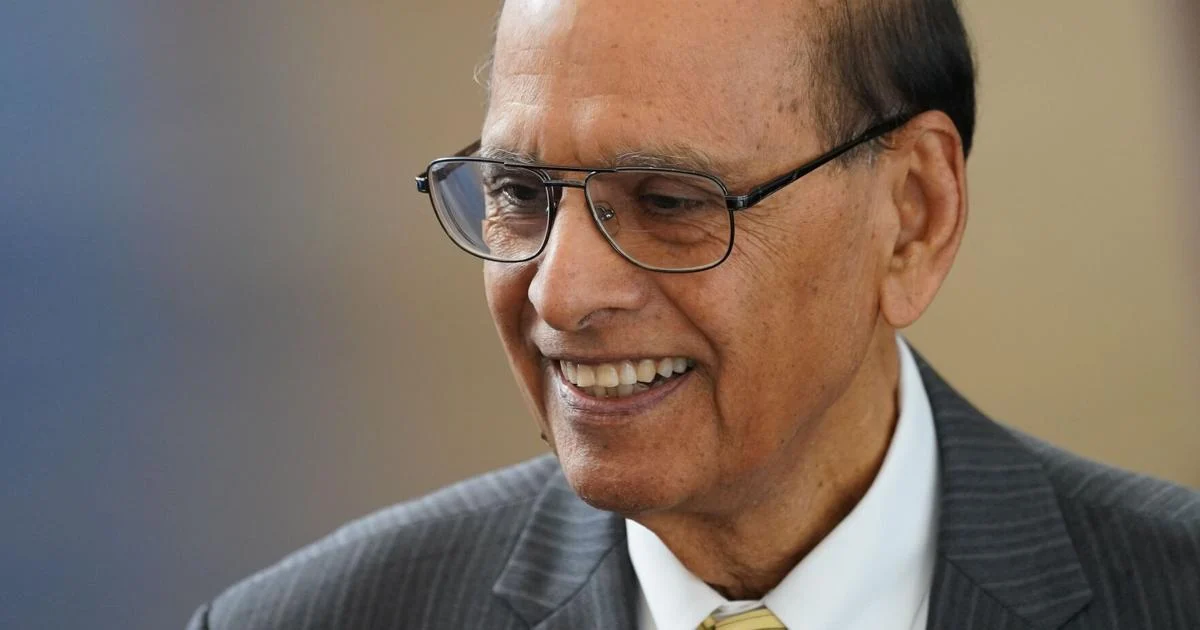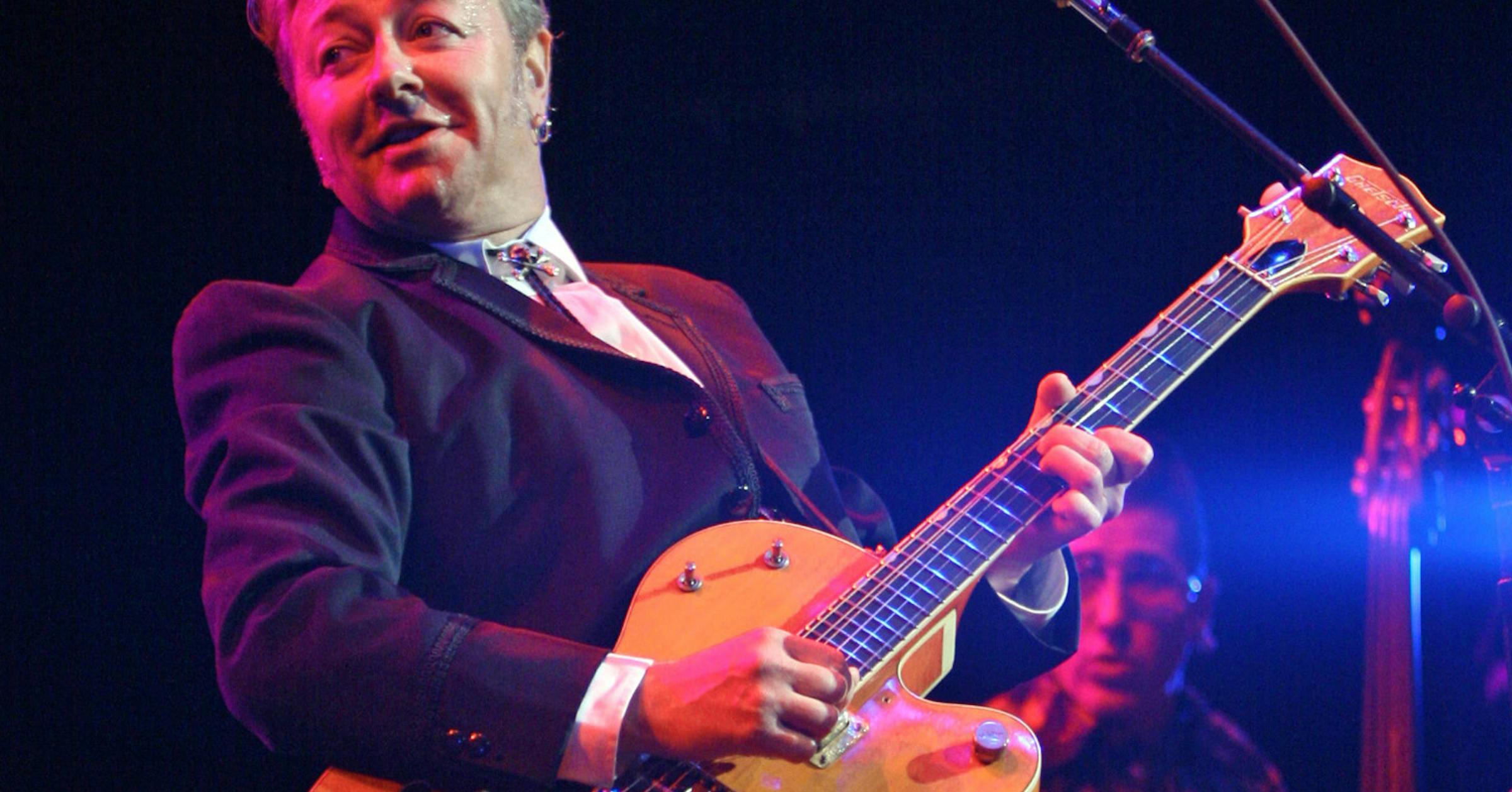
Outgoing University at Buffalo President Satish K. Tripathi’s long tenure was marked by navigating challenges for higher education, leading transformative projects like UB’s downtown medical school, elevating UB’s stature as a top national public research university and working to make the school a bigger factor in the Buffalo Niagara region’s economy.
Tripathi, 74, was also known for his kindness and humility, especially for someone in such a lofty position, and putting the university’s interests before his own, colleagues said.
“I have watched for years in admiration of the way he has navigated the uncertainties of state funding and the political environment on the campus. And I think he’s done a wonderful job,” said John J. Hurley, who served 12 years as president of Canisius College, now Canisius University, before stepping down in 2022.
“He is not a super high-profile, kind of egocentric person for whom this was all about Satish. It was always about the university and its place in the community,” he added.
Tripathi, the first internationally born and longest-tenured president for UB since it joined the SUNY system, announced Tuesday that he will step down in July 2026.
“For nearly 15 years, President Tripathi’s visionary leadership, integrity, stewardship and genuine human kindness have elevated the University at Buffalo into a premier public research university recognized for excellence nationally and around the world,” UB Foundation Board of Trustees chair Gregory Bauer said in a statement.
Satish Tripathi, the first internationally born and longest tenured president for the University at Buffalo since it joined the SUNY system, will be stepping down after a nearly 15-year run in the school’s post.
Tripathi joined UB as provost and executive vice president for academic affairs in 2004 after serving as dean of the Bourns College of Engineering at the University of California, Riverside, for seven years. He was appointed 15th president for the university in 2011.
“Some of the presidents of UB have basically hung around with a small group of cronies in Capen Hall and have administered from on high,” said Bruce Jackson, a SUNY Distinguished Professor and James Agee Professor of American Culture who has taught at UB since 1967 under six presidents. “Satish has been actively engaged with faculty and students at all levels the whole time he’s been here, from the time he became the provost.”
Jackson added that Tripathi’s personal outreach is remarkable given the scope of responsibilities taken on by a university chief, especially one at a school the size of UB. The university has 30,400 students, 8,070 employees and a roughly $1 billion annual budget.
“He’s CEO of Buffalo’s largest corporation, and there’s a lot of moving parts to it,” Jackson said. “So, in the best of times, it’s a complex job in a world that is ever changing. ”
Tripathi’s demeanor and ability to relate to people has helped him maintain the stability of the institution and grow it, even through a difficult landscape for colleges and universities.
Former U.S. Rep. Brian Higgins called Tripathi “a delightful man,” who “led the largest campus in the entire SUNY system with grace and grit.”
He credited Tripathi for navigating the pressures created by the declining student-age population in New York.
For the seventh consecutive year, UB’s total enrollment was more than 30,000 students for this academic year, including its largest first-year class with 5,019 undergraduate students this fall, even with 750 to 1,000 fewer international students attending this year. That’s led to a $6.5 million drop in revenue this year.
Higgins said he suspects Tripathi’s success as a problem solver stems in part from his background as a computer scientist.
“He, because of a keen sense of the institution and the people that made up the institution, kept an extremely large institution very agile to be able to adjust to the times,” said Higgins, now the president and CEO of Shea’s Performing Arts Center.
Tripathi’s genuineness and self-effacing personality allowed him to balance competing constituent interests. This was true even at times of controversy, Hurley said, like when UB police and other officers broke up pro-Palestinian protests on campus in spring 2024.
“I know there were some people that were unhappy about it. But frankly, I thought he moved decisively,” Hurley said. “The issue with the protests over the last 18 months has been, how far are you going to go in protecting people’s right to free speech where it starts interfering with everyone else’s right to get an education?”
And it’s a job that’s only become more difficult in recent years, as universities navigated the Covid-19 pandemic and the White House-led restrictions on research funding and international students.
“There is a positive energy that radiates from Satish, and it has been his extraordinary leadership over the last 14 years that has brought the campus to new heights in academic and research excellence and student success,” SUNY Chancellor John B. King Jr. said in a statement.
During Tripathi’s presidency, UB expanded its research initiatives and tried to become more of a catalyst for the Buffalo Niagara economy by encouraging entrepreneurship and looking for ways to turn its discoveries into viable businesses and products.
One of Tripathi’s first major projects as president and one that may leave the most lasting impact for both the university and community was returning the medical school back to the city’s core to anchor an academic health center on UB’s Downtown Campus.
The move enhanced medical education, clinical care and collaborations with UB’s research and hospital partners while bolstering the city’s biomedical sector as a catalyst for regional economic development. It also spurred a major revitalization of the South Campus as the home of UB’s graduate and professional educational programs.
William Maggio said UB helped boost the Buffalo Niagara Medical Campus by opening its Jacobs School of Medicine and Biomedical Sciences there in 2017.
“I think UB is in a far better place as a result of Satish’s leadership,” said Maggio, a Buffalo-based entrepreneur who has served on the boards of Kaleida Health, the 43North startup competition and the Jacobs Institute and received the President’s Medal at UB’s commencement in May.
“But I also think that this is an opportunity for the University at Buffalo to take its time to bring to our community a transformational leader that could accelerate the great work that Satish has done,” he added.
Jeremy “Jerry” M. Jacobs Jr., who recently took his father’s place as chair of the UB Council, expressed gratitude for Tripathi’s innovative approach and long-standing partnership with the Jacobs family, which gave $30 million to the medical school in 2015.
“His thoughtful drive and visionary leadership have not only elevated the University at Buffalo’s stature but have propelled it confidently into the future,” Jacobs Jr. said in a statement.
Another major achievement of Tripathi has been advancing UB in artificial intelligence. Last year, Gov. Kathy Hochul designated UB the home of Empire AI, a public-private consortium aimed at putting New York State at the forefront of the AI revolution. Since then, UB has supported more than 85 projects with over 250 researchers statewide.
Tripathi has also committed to helping build an entrepreneurial ecosystem that has benefited students, faculty and the Western New York community. Through its programs and support networks, UB has guided hundreds of startups that have raised more than $743 million and, in the past three years, created 1,700 local jobs.
As the first Indian-born president of a university in the Association of American Universities, Tripathi has played a prominent role in formalizing partnerships to foster research collaboration and student exchanges around the world.
Tripathi was an international student himself, leaving his native India to study in Canada, and understood intuitively the value of international education and supported efforts, such as study abroad programs and UB’s campus in Singapore, that strengthened the university’s ties to the wider world, said Stephen C. Dunnett, a former UB vice provost of international education.
“He understood that there’s no great university that’s not an internationalized university,” Dunnett said.
During Tripathi’s presidency, UB has collaborated on international research in fields like nanotechnology, biotechnology and photonics, and the school has consistently been ranked in the top 30 U.S. universities for hosting international students.
Joseph Stefko, immediate past president of UB’s Alumni Association, said Tripathi’s leadership has UB well positioned for its future pursuits.
“His steadfast support and deep commitment to our worldwide alumni network have strengthened the bonds that unite UB’s global community and amplify the university’s impact across borders,” Stefko said. “His vision and steady hand have elevated UB into a flagship institution of national and international distinction.”
Want to see more like this?
Get our local education coverage delivered directly to your inbox.
* I understand and agree that registration on or use of this site constitutes agreement to its user agreement and privacy policy.
Michael Petro
Reporter
Get email notifications on {{subject}} daily!
Your notification has been saved.
There was a problem saving your notification.
{{description}}
Email notifications are only sent once a day, and only if there are new matching items.
Followed notifications
Please log in to use this feature
Log In
Don’t have an account? Sign Up Today
Stephen T. Watson
News Staff Reporter
Get email notifications on {{subject}} daily!
Your notification has been saved.
There was a problem saving your notification.
{{description}}
Email notifications are only sent once a day, and only if there are new matching items.
Followed notifications
Please log in to use this feature
Log In
Don’t have an account? Sign Up Today



